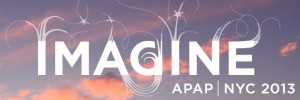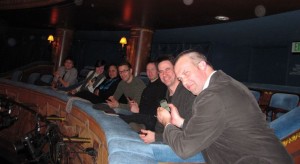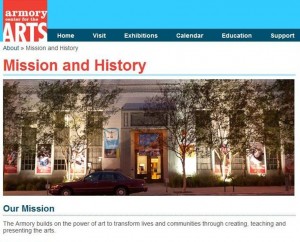Trudel | MacPherson
Trudel | MacPherson Profile Template
As part of our continuing How Strong Is Your Social Net? research project we are gathering mini-case studies about arts and culture social media experiments that “get it right” and analyzing projects that didn’t work but provided opportunities to learn. Please share your thoughts about what’s working and what you’ve learned along the way.
We invite you to contribute to the art field’s knowledge bank by telling us about significant ways your organization has implemented online strategies and how social media is helping you accomplish organizational goals, solve problems and engage with audiences in new and powerful ways. We’d also like to hear about unexpected challenges during implementation – especially when they led to improvements and insights.
Share your story — tell us about your best/worst experiences with Social Media and Digital Communications.
Please Leave a Reply below and include in your “comment” these elements:
- a one-line headline encapsulating your program or experience;
- a brief description of the issue or challenge that your organization was trying to solve;
- highlights of implementing the solution; and
- what were the results, learnings and landmines?
Trudel | MacPherson principals, Mary Trudel and Rory MacPherson, kicked off the New Year with a presentation at the prestigious Association of Performing Arts Presenters annual conference in New York City on January 14. Building on our landmark 2011 study, How Strong Is Your Social Net? we focused on effective uses of online communications and social media in the areas of marketing, fundraising and constituency engagement.
Joined by Stephen Litner, Director of Digital Media at BAM (Brooklyn Academy of Music), we reviewed effective practices from presenters across the country and engaged attendees with strategic questions about channel selection, balancing engagement with promotion, translating content to new mediums and building short and long term fan and financial support. Review the full presentation which can be downloaded here.
Read More
Armory’s Director of Communications, Jon Lapointe, joined the institution not long after the crash of 2008. Due to the economic crisis, pressure on the bottom line caused Armory to reduce the communication department’s print budget in a cost-cutting effort. They did less print advertising and reduced the size and expense of the large, elaborate printed promotional pieces that had previously been the primary means of getting the word out. These cards were reduced to a postcard format. Meanwhile Armory shifted to promotion via email and Facebook. But Jon thinks Facebook is the biggest driver. “We have more Facebook fans than recipients of our email blasts. We send 5,000 or 6,000 emails via constant contact. The open rate for these is 1,200 in the best case. But we have over 6,000 Facebook fans and there are 2,300 impressions generated by every Facebook post.”
Even though there have been improvements in the economy and in Armory’s budget condition, Jon sees no need to go back to print. “We’ve seen steady increases in class enrollment. Last summer was the best we ever had. Also we’ve had the best fall ever – typically a slow period.” Armory has also posted a new volunteer form online. This has brought in more young volunteers, age 30 or younger, than they ever had before.
Recently Jon has been fine tuning Armory’s Facebook presence so it is now not exclusively about Armory. Items now highlight interesting art installations that may be on view anywhere in the world, from London to the Netherlands projects. These are interspersed with items about Armory studio classes and contemporary art exhibitions. Jon thinks the ecology of the feed is important – that it’s not all about Armory all the time. “It’s like curating the messages on Facebook. We need a variety because parents of children in the classes don’t really care about the exhibitions program and young art fans without kids don’t care about the studio program,” that Armory promotes with postings like photos of an “Oreo Cameos” project – portraits carved by kids into the filling of Oreo cookies.
– Featured quote from Jon Lapointe
“We substantially reduced the communications department’s print budget, reduced our reliance on print, focused our energies on social media and web marketing and have seen attendance levels increase.”
– Proof points
- It’s possible to reduce the print media spending and grow one’s constituency.
- In one’s social network presence it’s important to balance the amount of self-referential material with citations of relevant ideas from a variety of sources.
- Keep in mind multiple constituencies for the organization and sustain information that appeals to each group.
Links:
http://www.facebook.com/armoryarts
http://www.armoryarts.org/twitter
http://www.armoryarts.org/youtube
Read MoreMilwaukee Theater Invites Fans to Meet in Special Tweet Seats
To build new audiences for its Spring 2011 production of the Lion in Winter, the Milwaukee Chamber Theatre (MCB) reached out to Twitter mavens with strong online followings, creating a designated section in its three level proscenium theater where tweeting throughout the performance was encouraged. Originally worried about distracting other members of the audience, the company experimented with a special “tweet seats” area reserved for 15-18 tweeters.

Veteran Tweeters occupy their own gallery at Milwaukee Chamber Theatre’s Cabot Theater, tweeting comments and real time reviews during productions.
The company found the new online activity was worth providing complementary “Tweet Seats” to strong Tweeters, reporting that resulting awareness and buzz about the show have justified the investment. This Tweet Seats section has become a draw for tweeters who often bring friends, new to theater going. For each performance, the company takes the first 18 tweeters who sign up and continues to recruit new candidates with strong followings to encourage attendance.
This real time reviewing has helped MCB to relate to potential new audiences. Monitoring the twitter feeds during performances has allowed the MCB to take advantage of spontaneous events to alert fans on Facebook to the dynamic “only in live theater” experiences.
The Milwaukee Chamber Theatre has a strong Facebook presence and began using QR codes in the 2011-2012 brochure. Codes are included on each show page and link to preview video and behind the scenes information about each production. QR codes are also used on promotional postcards to build awareness of upcoming shows. Video features scenes enacted at the annual season announcement party or interviews with the company’s artistic director or visiting guest directors.
Quote: “Our producing artistic director, Michael Wright, was concerned about annoying traditional audiences with disruptive Twitter action during performances but after we closed off a special Twitter section in the gallery, he was open to trying Tweet Seats to reach new audiences. Our ongoing challenge is to make time to respond to all the positive comments we receive.”
Proof points:
- Integration of Tweet Seats into ongoing performances
- Identification of Twitter mavens with strong enough followings to make complimentary seats worth it
- Monitoring and responding to comments in the Twitter-verse
Links:
www.milwaukeechambertheatre.org
www.facebook.com/MilwaukeeChamberTheatre
milwaukeechambertheatre.com/about-us.aspx
Read MoreTrudel | MacPherson has found that organizations which institute a formal policy find social media outreach less difficult and more rewarding for everyone involved. UMS (University Musical Society) at University of Michigan/Ann Arbor created staff participation guidelines to enable a wider range of staff to engage more continuously with patrons and fans. UMS also created community guidelines to manage fan interaction on its UMS Lobby — http://www.umsLOBBY.org — a virtual venue for comments and conversation. Check out the guidelines here: http://www.arts-hive.com/wp-content/uploads/2012/10/Community-Commenting-Guidelines-for-UMS-Lobby.pdf and http://www.arts-hive.com/wp-content/uploads/2012/10/Staff-Commenting-Guidelines-for-UMS-Lobby.pdf
Read MoreTell us about your best/worst social media experience...
…and meet digital communications pioneers.
Click on our profile template to get started.
Want to get in touch?
We’d love to hear from you. Contact us.


